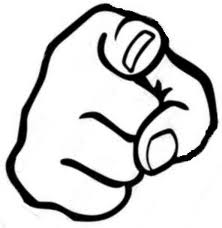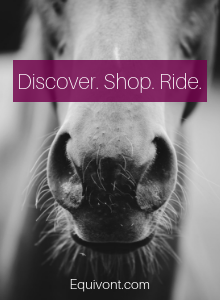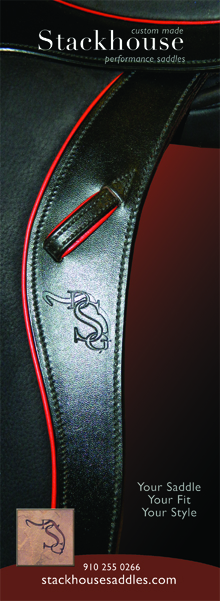Search the Site
A Trainer's Responsibility! (That's YOU!) (Current Freebie!)

Horses are the most amazing creatures....... from their incredible athletic abilities, to their regal spirit, to their generosity and desire to please us humans, to their fascinating powers of perception. I feel like we owe it to them to carefully consider what we do with them on a daily basis.
Anyone who is calling themselves a "Horse Trainer" has a huge responsibility to do right by every horse they work with. And even if you are not a professional, you are not off the hook! You still have that responsibility.... as YOU are your horse's trainer. Here are 10 things you MUST do, to achieve that!
- Make sure the horse is really ready to work - This means that the horse must be sound and healthy. His feet need to be well cared for, and in good condition. He must be fed an appropriate amount of food to maintain proper weight, energy, and muscle, as well as a diet that is balanced with the proper nutrients to maintain overall good health. And of course, he must have access to fresh water at all times. No horse should be asked to work when these basic requirements are not met.
- Ensure the horse is fit for the job - The level of work being asked for must be appropriate for the horse's fitness level. If the horse is made to work at a level higher than his current fitness level, he will be prone to soreness and injuries.... possibly even catastrophic injuries. Yes, you must push a horse slightly past his current conditioning level to improve it. But only slightly, and not every day. Working a horse harder than his current fitness level more than twice a week (with lighter days in between for recovery) will break him down, rather than build him up.
- Make sure the horse is comfortable - A horse can still be quite sore even if he still jogs sound. It pays to take the time to develop a base line on each horse... knowing what is "normal" for them in terms of how sensitive they are to touch or palpation in all areas of their bodies, how much filling they tend to carry in their joints, and how they move when they come out of the stall. This way any subtle changes can be dectected quickly, hopefully before they can become a problem. Remember that with any bilateral lameness, such as when both hocks or both front feet hurt equally at the same time, the horse may not visibly limp. And a horse can be quite sore in his back or Sacroiliac joint, without showing signs of lameness. But if you are observant, and really paying attention to your horse, you will usually see the signs that something is wrong. Usually the horse's attitude, stride length, or overall performance will be on the decline. It is not ok to dismiss these signs, just because the horse still jogs sound. It is also a must that all tack fits correctly, with particular attention to the saddle - as a poorly fitting saddle can really make a horse sore, and cause all sorts of problems. Bit and bridle fit are quite important as well.
- Always be working towards suppleness - Free from the paralyzing effects of tension and resistance, the truly supple horse allows the energy created by the hindquarters to move freely into the connection with the bit. This means that the horse will be moving in such a way that he can most easily and comfortably carry a rider's weight on his back, and there is the least possible amount of strain on his joints. It is of great benefit to the horse to regularly include the various lateral suppling exercise outlined in this article to help the horse develop and maintain his lateral suppleness. Stretching exerices, and exercises such as the Rubber Band Exercise, should be incorporated regularly, to improve and maintain the horse's longitudinal suppleness. Always remember that the various movements are not an end in themselves, but rather are tools to develop the horse's flexibility, suppleness, engagement, and self carriage.
- Stick with Classical Methods - There is an old adage (that's very true), that the horse should become more beautiful, and move more beautifully, if the training has been correct. This is because correct Dressage transforms the horse into a more supple and elastic athlete. Correct riding and training... whether we are talking about Dressage or Jumping... will bring out every ounce of inherent talent that each horse has to offer. If the horse's body and movement are not becoming more attractive after a length of time in a training program, it might be time to re-think the program!
- Always train progressively - All horses should be on a carefully thought out, individualized, and progressive training program... with a particular emphasis on a strong foundation of basics. Systematic, progressive training is like stacking one building block squarely on top of another, to eventually build a strong, solid building. Done this way, you are setting yourself up for success as you advance and move up the levels... as you can simply go back a step if you run into difficulties. Training in this way also helps to keep the horse's level of confidence high, as he will have a better understanding of his job.
- Don't take short cuts - No matter how "gifted" a horse may be, they shoud not be allowed to "skip grades". It is well worth the extra time it takes to make sure there are no holes in a horse's foundation. It is almost always faster to do it right the first time, instead of having to go back and fill in the holes. And try to stay away from all "gadgets" in your training program... as with horses, a short cut usually just gets you to the wrong place faster.
- Be precise and consistent with aids, expectations, and feedback - Make sure you know exactly what you need to do to ask for any given task. Be consistent with your aids and your expectations, and be ready to give immediate, accurate feedback for the horse's actions. This will give a horse confidence in you as his leader.
- Leave emotions out of it - There is simply no place for negative emotions when riding. If you think your horse is going to improve once you have crossed the line into anger, frustration, annoyance, impatience, or irritation - think again. Horses tend to mirror their riders, both physically and mentally. If you begin to feel annoyed or irritated, your horse will often become agitated as well. But what if the horse starts it? What if the horse gets upset or anxious about some external factor in the environment, and that raises the riders anxiety level as well? The rider is still the one that needs to deflate the situation by controling their own emotions. It is imperative that the rider can keep their cool, so that they can be the calm, fair, and confident "herd leader" that will help their horse regain its composure.
- Be adaptable - More success will be found in changing your riding to suit each individual horse, versus trying to make all horses adapt to your way of riding. Look at each horse as the individual that he is, and try to determine how you should adapt your training program, or your riding style, to get the best out of him. A good rider/trainer will always be asking themselves, "What can I do differently, to improve the way this horse is going?" And don't try to make all horses fit into the same "box."
Does this sound like a lot to do?? Well it is! That is why this is such a challenging sport! It is also why it is then so overwhelmingly rewarding when things go well! And the bottom line is we owe it to our horses.






